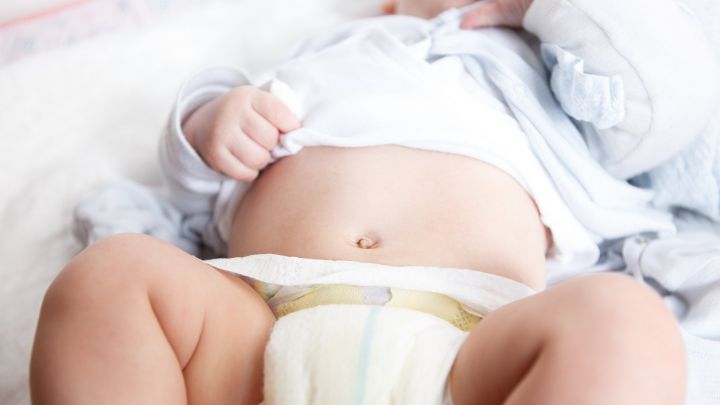
Pediatric inguinal hernia: a congenital defect to be operated on as soon as possible
Inguinal hernia is a very common pathology in childhood, it affects 1 child out of 100 and is much more frequent in males and preterm infants, especially if they are of low weight
How does inguinal hernia form in children?
Unlike adults, inguinal hernia in children is congenital and is due to a patency of the peritoneal-vaginal duct, outpouring of the peritoneum which allows the descent of the testicle into the scrotum.
During intra-uterine life, the testicle is located in the retroperitoneum and starting from the 12th week it begins its descent into the scrotum through the inguinal canal, dragging a portion of the peritoneum with it and forming a sort of “glove finger” recess ( peritoneal vaginal duct).
In females, the peritoneal-vaginal duct or canal of Nuck allows the passage of the round ligament of the uterus to the labia majora.
The peritoneal-vaginal duct tends to close spontaneously at birth or in the first few years of life, but failure to obliterate causes a persistent communication between the abdominal cavity and the scrotum, allowing the passage of intestinal contents (omentum, intestinal loops) through the inguinal canal.
In girls, an inguinal hernia can also involve a tube or ovary.
How and when does inguinal hernia occur?
In children, the hernia manifests itself as a tense-elastic swelling in the groin, usually unilateral (60% on the right, 25-30% on the left) and bilateral only in a minority of cases (10-15%).
This swelling can occur at birth or in the following months.
The dimensions can be variable and in boys it can also reach the scrotum (inguino-scrotal hernia).
The parent is usually the first person to notice this swelling during a diaper change or bath time.
The swelling tends to be evident in conditions of increased intra-abdominal pressure and therefore during crying and efforts, and then spontaneously decreases in conditions of rest or by exerting modest pressure with the hand.
Certainly the reduction is only temporary, in consideration of the persistence of the peritoneal-vaginal duct.
Diagnosis and treatment
In case of suspicion of an inguinal hernia, therefore, a pediatric surgical visit is always necessary.
Diagnosis is clinical and ultrasound examinations are not necessary.
Once the diagnosis has been confirmed, since the congenital defect and spontaneous closure are not possible, the therapy is exclusively surgical.
Unlike the umbilical hernia, the inguinal hernia can become complicated and undergo obstruction or incarceration, i.e. the contents of the hernial sac remain trapped inside the hernial passage, preventing its reduction in the abdomen.
In these cases, the swelling has a hard consistency, sore and painful to palpation and with overlying hyperemic skin; the child has inconsolable crying and, in some cases, vomiting.
CHILD’S HEALTH: LEARN MORE ABOUT MEDICHILD BY VISITING THE EMERGENCY EXPO BOOTH
When to operate on inguinal hernia?
In the presence of clinical signs of obstruction, it is necessary to take the child to a pediatric emergency department, where it will be possible to manually reduce the hernia in most cases.
After the hernia is reduced, the child needs surgery within 48 hours to avoid further episodes of blockage.
In cases of failed reduction of the hernia, however, immediate surgery will be necessary to avoid vascular suffering of the intestinal loops which, not returning to the abdominal cavity, will not receive an adequate blood supply (strangulation).
The incidence of blockage of inguinal hernia tends to be more frequent in the first year of life and especially in premature babies, where the risk reaches 30% of cases.
For this reason, in some pediatric centres, in view of the high risk of clogging of the inguinal hernia, elective surgical correction of the hernia is recommended in premature infants before discharge from the neonatal intensive care unit.
The operation consists in the isolation, ligation and section of the peritoneal-vaginal duct.
The procedure is performed under general anesthesia and in Day Surgery, with discharge after surgery.
The post-operative course includes home rest for 5-7 days and abstention from sports for 2-3 weeks.
For newborns and premature babies, however, the operation is performed under ordinary hospitalization and with discharge at least 24 hours after the operation.
Read Also
Emergency Live Even More…Live: Download The New Free App Of Your Newspaper For IOS And Android
Inguinal Hernia: Symptoms And Treatment
Congenital Diaphragmatic Hernia (CHD): What It Is, How To Treat It
What It Is And How To Recognise Abdominal Diastasis
Chronic Pain And Psychotherapy: The ACT Model Is Most Effective
Hiatal Hernia: What It Is And How To Diagnose It
Percutaneous Discectomy For Herniated Discs
What Is That Swelling? Everything You Need To Know About Inguinal Hernia
Symptoms And Causes Of Umbilical Hernia Pain


